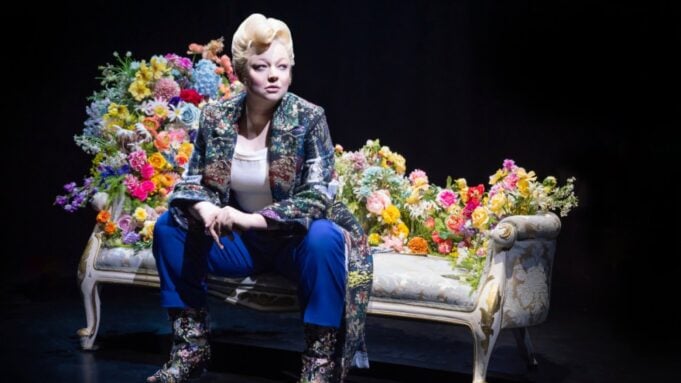Sarah Snook plays all 26 characters in the new Broadway production of “The Picture of Dorian Gray.” It’s not a question of can she pull it off, but how?
Costume designer and scenic designer Marg Horwell is responsible for seamlessly transforming Snook, who plays the title character, and is obsessed with outer beauty. Horwell collaborated with Snook and praises her for the shapeshifting believability that the actress brings to the stage. Horwell says the essence of the show and performance lies very much in Snook and how she would subtly go from one character to another with a tiny shift of her head, while other times there would be a large transformation.
Writer-director Kip Williams brings a high-tech adaptation of the classic Oscar Wilde story to Broadway. Snook takes on all 26 characters -mostly male – bringing Basil, the painter, Sir Henry Wotton, Lady Agatha, Sybil and more to life as a camera crew and stage management help Snook move through her performance.
Horwell sat down with Variety to talk about her influences, coming up with the perfect pair of pants, and how Annie Lennox and Bad Bunny also inspired her creativity.
How did you come up with the first Dorian Gray look as an angelic one with the cherub curls?
Practically, we can’t change her bottom half very much. I wanted to create something that could translate over those first three characters and our narrator character. I think there’s something about Victorian-era fashion that has been referenced decade after decade, and it was having a big resurgence over the last five years, where it felt like high necks, frilly things and ties and more androgynous fashion were in.
When we first see Dorian, I wanted it to feel like it was almost overexposed on the camera and that he felt so light and lit from within. The curls are great and fill the screen because they’re so textured and light. I spent time trying to figure out the best thing on camera, and had this high neck white silk top, and it was great to get this overblown blast of light that you get when you first meet Dorian. I liked the undone nature of things because it’s a vest, that’s not really a vest, and has long ties that aren’t tied up, they feel like suspenders or lingerie, that little bit feminine, that get imbued into Dorian. There are a lot of corsetry lines, so it’s actually a very feminine look. Overall, it was something that felt so buoyant and light and that was the aim.
The dinner sequence was fascinating because you have varying looks of Sarah as these characters, and this snapshot moment of society and the people within it, what was the idea behind that scene?
I tend to lean towards a lot of monochromatic looks. Lady Agatha is really pale, and that extends to all of her. The magenta of the Duchess; we found great upholstery fabrics that had good floral in it and a metallic thread. She’s also got this lilac hair, and with that magenta dress, from a distance looks quite monochromatic.
Love Film & TV?
Get your daily dose of everything happening in music, film and TV in Australia and abroad.
It’s a great scene because it’s a scene on screen, but you view it as though it is a theater scene. You see a close-up of them, and it feels like a bold silhouette with as much texture as possible. But I love them lined up together. They’re an odd rainbow, and I did them one at a time. We kept adding bit by bit, and it’s quite a collage. I like to start with historical references and then make them abrasively contemporary. All the jewelry that Lady Agatha is wearing is mine from 10 years ago. I went through a stage of wearing big costume jewelry, so I piled it all up on her neck. It’s also changing her posture. The fur coat that she wears was a donation from a donor at the Sydney theater company. It’s too tight, and we pinched it out more at the back, so Sarah’s got no neck, and her arms are pinned back to her side. And because they’re seated, we put padding underneath her bust, and we beefed up the calves of one of the men so that she just had a slightly different stance.
Going back to your point about the pants, how did you find the right ones that would carry her through?
They’re such hard-working trousers, we ended up making them. But there’s actually one trousers change in the whole show, and you don’t see it. It’s in a scene where you can only see her top half, and there’s someone below, and she’s speaking the whole time, and they’re changing her shoes and her trousers while she’s talking.
Those pants have to do so many different things and not get caught when she’s dancing or when she’s murdering Basil. There’s a weird infrastructure to them, with binding; it’s over over-engineered pair of pants. She’s in a black space a lot of the time, so we didn’t want to make them black. They’re made from French navy wool, which pulls her out of the darkness, and they’re blue.
We don’t have any green because of the screens, so we take green out of everything until we get to the forest. But otherwise, it’s blue and flowers all the way through.
Speaking of flowers, can you talk about the importance of that floral motif that we see throughout, and how it evolves?
In the novel, Dorian walks out into a garden, and with Oscar Wilde’s writing, he writes pages describing fabrics, jewels, decadence and really looks at the details of things that are very beautiful. So, he describes this garden in great detail, of what flowers were where, the scent, and the bees. I love flowers on stage. I feel like we know that they’re fake. I love the overt theatricality of that. We wanted something that started quite simply and then evolved and grew until it was overtaking his body. It starts in the portrait, he holding a single flower, and then there’s a big bunch of flowers. When he goes to his childhood attic and there are flowers growing out of the floor like it’s been locked away, it feels like it’s been there for a long time. On the couch, it’s growing out of the furniture. It’s completely all around him and around his head. And when he gets to the country house, I think that’s when it’s claustrophobic. I think I like it to feel sickly, and there’s no green, and it’s a lot of pink. But all of those arrangements in the country house they’re actually about 50% flowers, but the rest of it is garbage from a party shop. So there are toy sharks, zombie hands, tiaras, unicorns and dog toys. So if you ever get flashes of them on camera, they’re kind of over-stuffed capitalism. And then that’s when it starts growing out of his clothes. So the final suit cuts up around his neck, and the floral embellishment on his clothes ties him into all of that. It is something that overtakes his body over the course of the show.
With this, the crew is on stage and doing those costume changes in front of the audience. What did you have to do to make sure that those were done smoothly?
We built a team quite early. A lot of people who do dresses or wigs are not used to being on camera. So we talked about it and we planned it out like a choreography session, and did several sessions with Sarah – maybe five hours, and we ran it on stage.
I love their relationship with her now, because they know each other so well that if something goes wrong. They’ve just got a code where they can tap her on the shoulder and she’ll know that something’s late. Or if she gets ahead of herself, they know how to adjust to her. Sarah’s so good at multitasking in that way that she can keep speaking and still be able to adjust in those moments.
What was the significance of the final costume?
I wanted it to be something that could unravel. So we dress her and dress her until she’s at her peak in the country house, until it’s an annoyance, or she’s claustrophobic.
When she’s in the forest, she’s so hot because she’s got the coat on top as well. So she’s wearing the corset, and then the suspender section, and then she’s got the other thing that looks like armor, that’s a riff on Versace with engraved sections on it, and that has the floral neck on it. That’s when she has to do the big monologue with the gun. So by the time it unravels, it’s such a genuine relief to try and get rid of those pieces.
I looked at the menswear of the time, it was when they were cinching underwear, under their clothes, and would cinch jackets, and started to wear flared skirts. So, I took that. The corset she wears goes on top of everything, and it’s on backwards with the lace up front. So, it’s lace on top of the brocade on top of flowers, so it felt embellished. I also looked at photos from the 1980s, and Annie Lennox with that androgynous fashion and wide shoulders. I got sparked by Bad Bunny, who wore that backless suit to the Met Gala. I got obsessed with Lucky Blue Smith, the model who had that impossible, tussled blonde hair that sometimes he’d wear in a quiff, and it just felt angelic and young and yet felt 100 years old. So, that look is a super eclectic look that is deliberately layered on top of each other, so that she feels completely held, and then can unravel by the end.
In the end, we see her mic and the wig cap, and these long strings hanging, and those suspender clips, so it feels like she’s falling apart. It’s a great thing to design a character that is so obsessed with esthetics and beauty, and what that might mean when you start to create something on yourself, you start to make that about how you appear in the world and manufacture something on yourself, and what that might do over many, many years of shifting and adding, and then that’s where you end up.
Can you talk about designing Sybil Vane, the only woman in the show, and ideas you had for her?
She’s underwritten in the book, and she’s a very two-dimensional character. She’s a little girl and this big cupcake princess. She’s Juliet after she kills herself. She’s got the beaded stomach wound and the red gloves with the beaded blood. It’s only a fleeting moment that you see.
What went into Basil?
He’s the same bottom half as everyone because we see he’s in that first scene with all of them looking at the portrait together. He’s all elongated, so his hair is up and frizzy, and he’s a bit undone. He’s got the big sideburns. He’s got that great burnt orange coat that’s just straight, and a bit too long for a coat of the time. He’s got a velvet tie, but half of it has come undone, so it’s just a single loop and he has lace that’s attached to a collar, which is half a tuxedo; it’s a real Frankenstein shirt that we made. It’s a standard shirt, and we changed the buttons and bits and pieces on it. You see his hands every now and then, and. he’s got flecks of paint under his nails.
This interview has been edited and condensed.































